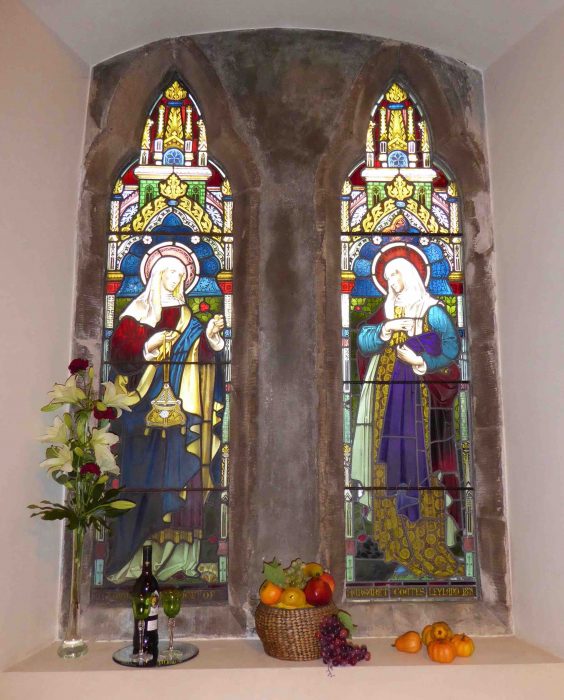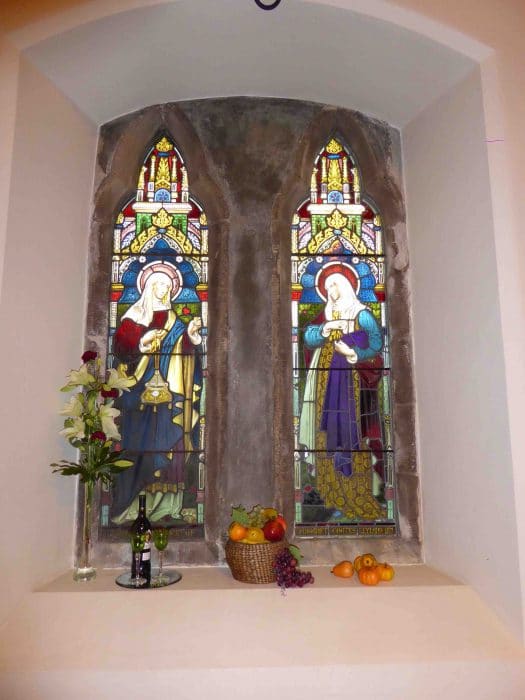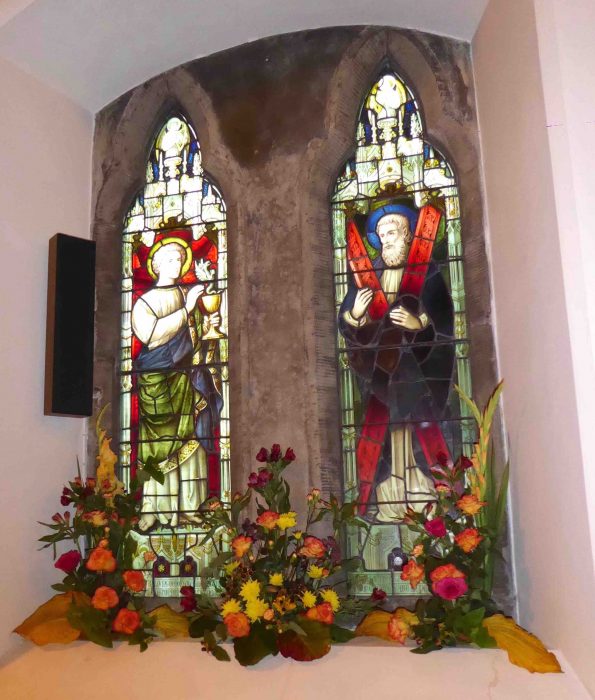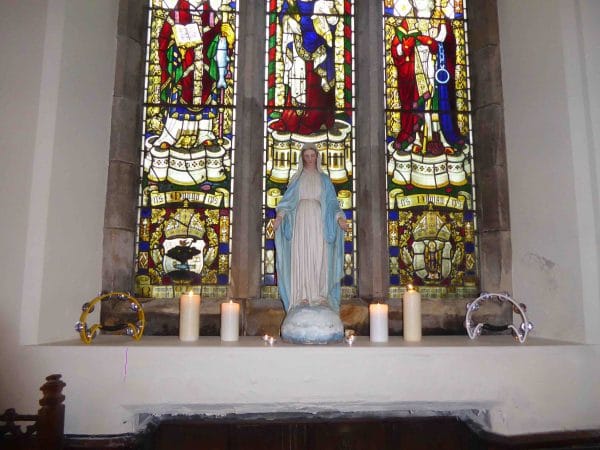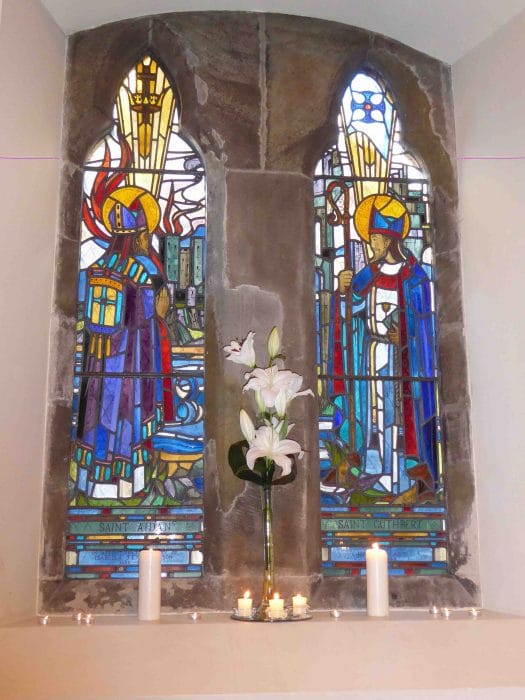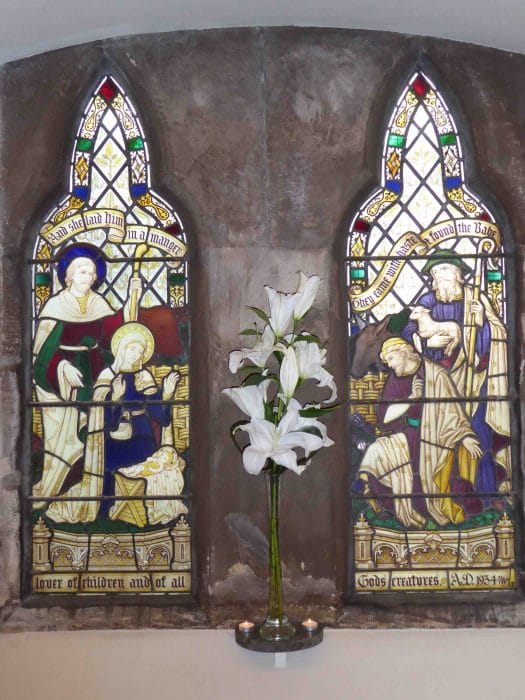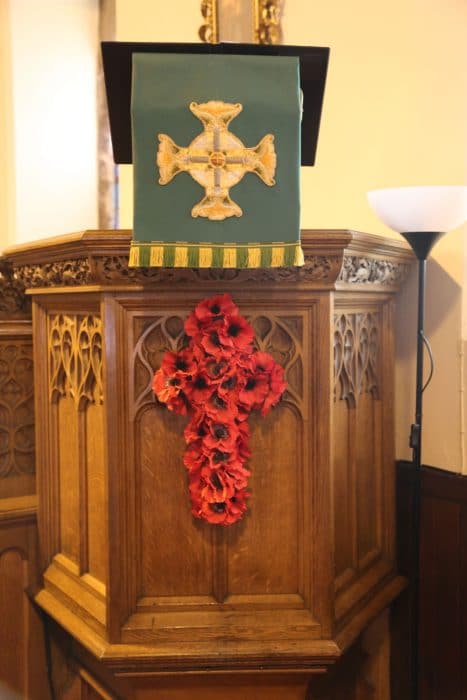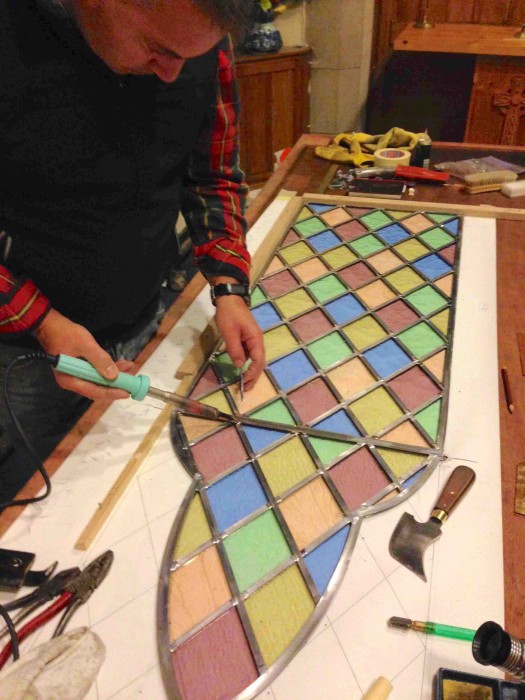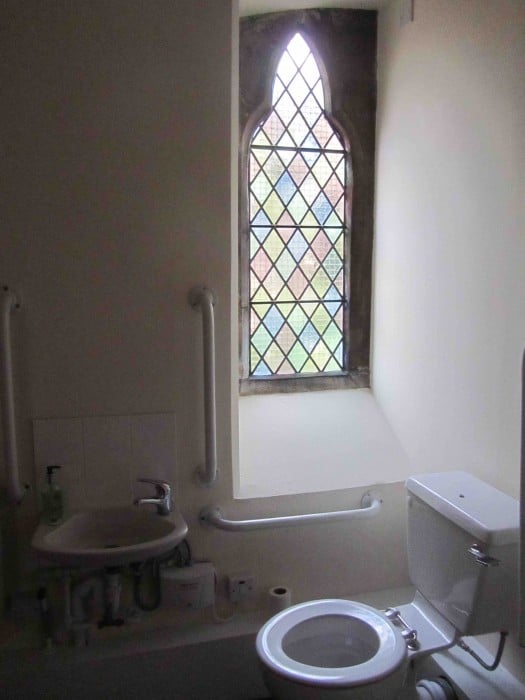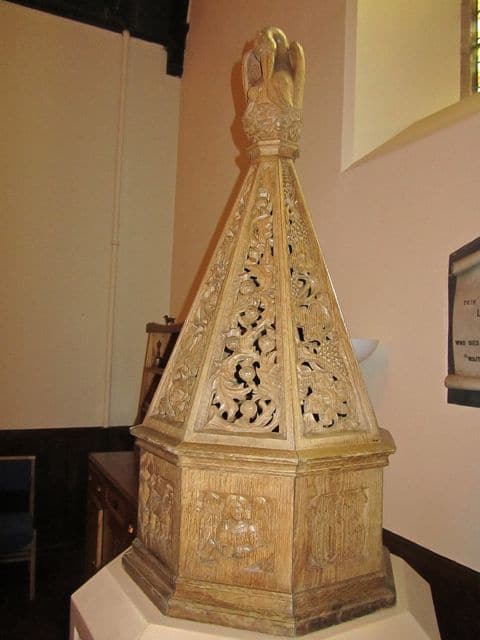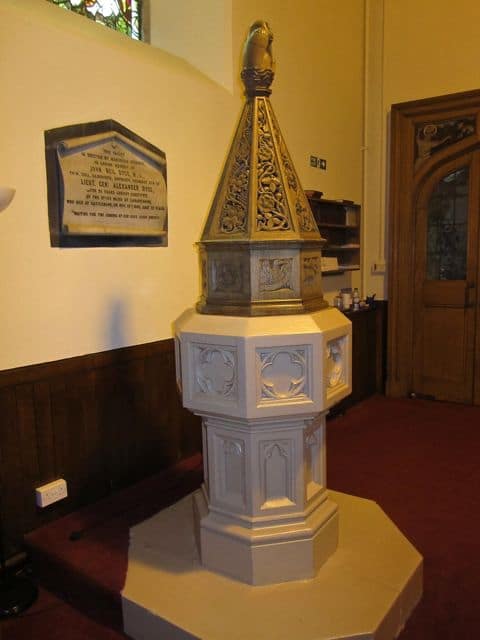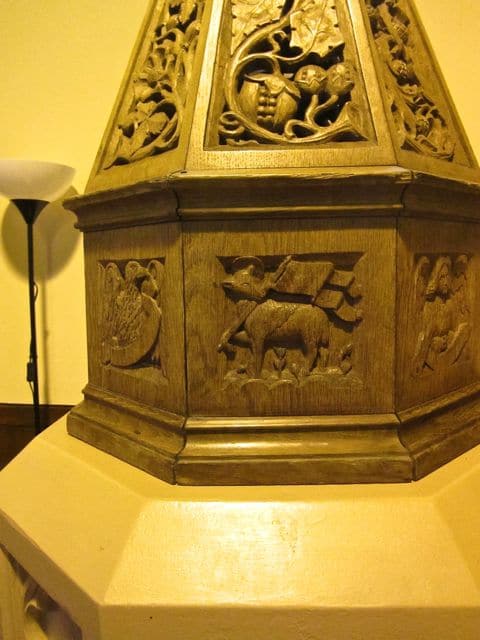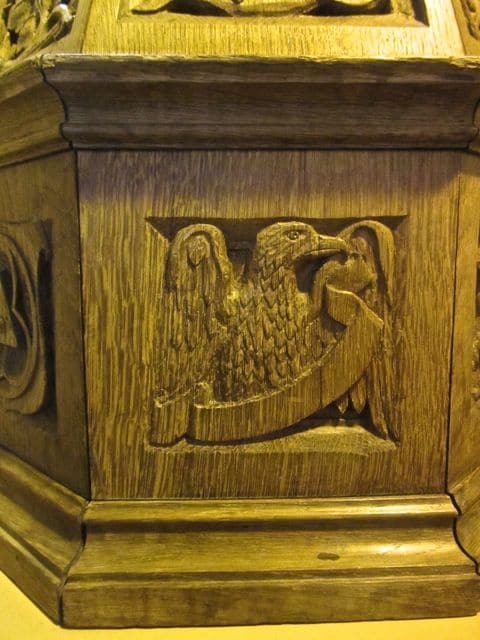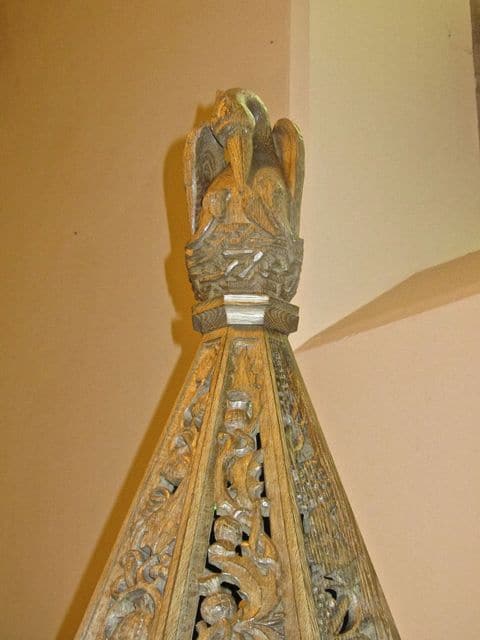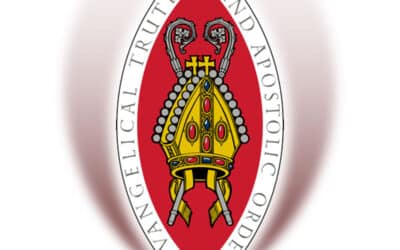Building: Christ Church Lanark is a Grade B listed building. The architect was John Henderson (Edinburgh 1804 – 1862) and Christ Church was one of his last commissions. Henderson was also responsible for Lamington Chapel (1858) and St Peter’s, Montrose (1859).
Christ Church was consecrated on Lady Day (25 March) 1858 and celebrated its 150th anniversary in 2008. St Mary’s Hamilton, was also designed by Henderson and completed in 1849.
Christ Church was constructed in traditional Gothic style with the facade in keeping with the scale and character of Hope Street where the church stands. On turning the corner into Greenside Lane, it supports the scale and streetscape defined by the row of weavers’ cottages. The North Aisle was built in 1923 as a memorial after the First world war. This side chapel has recently been improved greatly by the purchase of free-standing cathedral style chairs. The side chapel is still used as a memorial chapel as most of the chairs have been purchased by parishioners as memorials to loved ones or to mark special occasions such as baptisms and weddings.
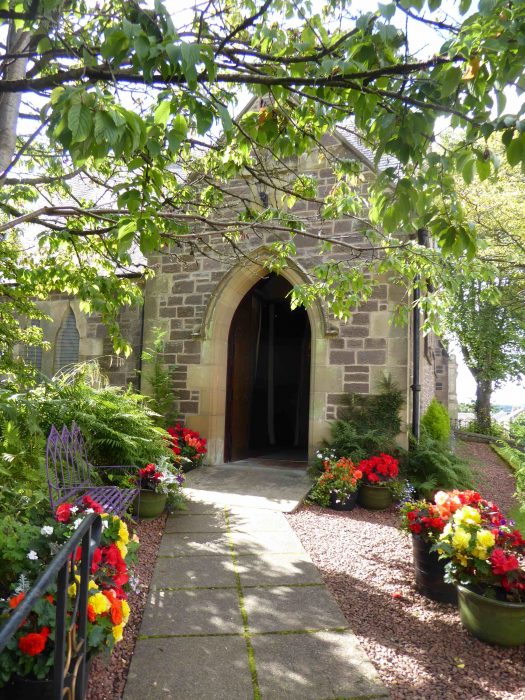
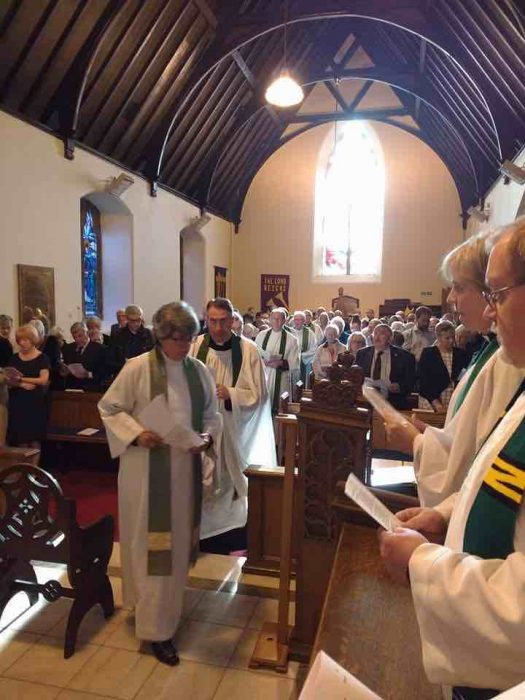
Clergy process into church 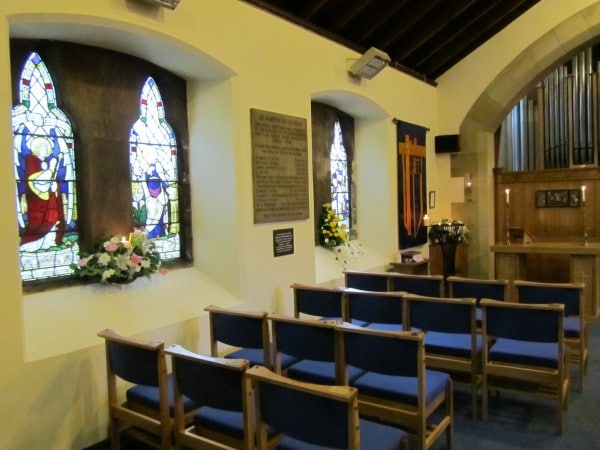
Memorial Side Chapel 
Interior: As you look along the nave you see rather plain, utilitarian pinewood pews. However, the clergy and choir stalls and the pulpit are completely different. They are more elaborate, made of oak and carved in ‘Edwardian gothic style’. Beyond the stalls, in the Apse, there is a carved altar. The dossal screen is particularly elaborate. The table itself is carved but one only sees it during Lent when all the altar cloths are removed. We know who carved the altar but it is not sure whether the same person carved the stalls but there is some stylistic similarity so it is reasonable to assume they were done by the same person. During the early 20th century much of Christ Church was renovated and this work was completed in 1916. The altar is believed to date from this time. The master carver was Major General Thomas Rennie Stevenson C.B. of Sunnyside, Lanark. He died in his 83rd year, a fortnight after a disastrous fire at Sunnyside in 1923. Sunnyside had full of his carvings. At his memorial service, the Rector of Lanark, Dean in Thrum, said, “Half a lifetime of quiet, happy work ruthlessly destroyed in one night. We are happy here in this little church that we have with us some precious specimens of that loving workmanship which we shall treasure. Half a lifetime’s work destroyed in a night and a home quelled by fire.” Major General Stevenson was born in Braidwood House near Lanark. He joined the 67th Regiment in 1861 and was attached to the 87th Royal Irish Fusilliers in 1863 and commanded the regiment in 1899. So Major General Stevenson has left his memorial in the carvings in Christ Church. He was interred in St Kentigern’s Cemetery at the top of the town. (researched by David Jenkins 2006)
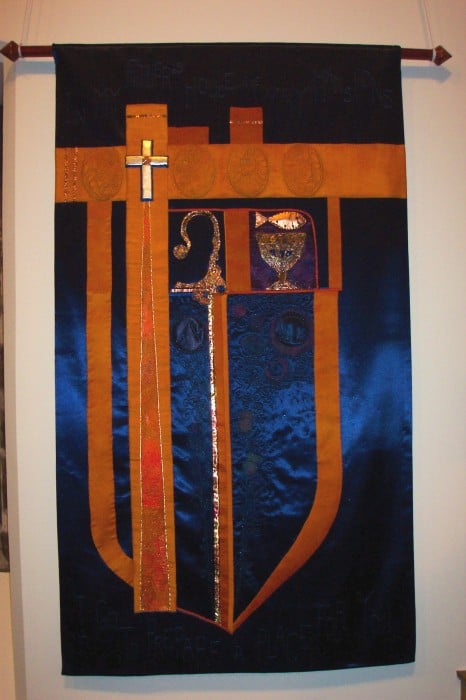
The McIntosh Banner: The McIntosh family commissioned local artist, Myra Gibson, to create the banner to commemorate the life and work of Revd Canon Hugh McIntosh who was Rector of Christ Church from 1970 to 1983.
This beautiful banner which hangs in the side chapel, needs to be viewed at close hand to see the intricate details and understand their significance.
Matthew, Mark, Luke and John represent Canon McIntosh’s love of the Gospel; the chalice and fish, his love of the Eucharist and the shepherd’s crook, his role as the good pastor to his flock.
The straight path leading to the Cross is the path to which many lives were changed after guidance from the Canon.
The scrolls and thistles are symbols of his native land.
The whole is set within a cross in heraldic mode to portray strength and masculinity.
The words spoken from John’s Gospel, “I go to prepare a place for you”, are those spoken by Canon McIntosh at the end of his life.
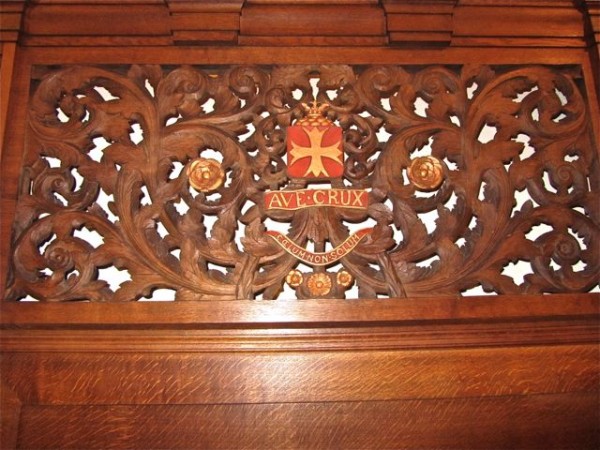
The Dossal Screen is worth a closer look as it is intricately carved with the words “Ave Crux”, hail the cross, painted in red and gold. It is adorned by four beautifully carved angels with two further angels holding shields at each side. One shield displays the chalice and a paten (plate). This is the insignia of the Episcopal Church.
Paintings: Christ Church has two copies of major paintings, neither of which is particularly valuable but they are both beautiful. The one above the pulpit is a watercolour painting by Galeoti (around 1800) actually showing the central part of Andea del Sartos’ painting “Madonna and the Harpies” (1500) It shows Mary holding baby Jesus.
Just inside the main entrance is a large picture by Silvio Zocchi which is a copy of the famous Raphael painting, “The Madonna of the Goldfinch” which hangs in the Uffizi Gallery in Florence. This painting shows Mary with the two cousins Jesus and John the Baptist and a goldfinch. The goldfinch is a symbol of Christ’s future violent death. Behind the altar in the side chapel there is also a small Tryptich. This is divided into three sections, which are hinged together and folded during Lent. When folded, there is a small painting of Veronica and the cloth that bears the image of Christ’s face. It is interesting to note that the fanciful derivation of the name Veronica comes from the words Vera Icon (ikon) meaning “true image”.
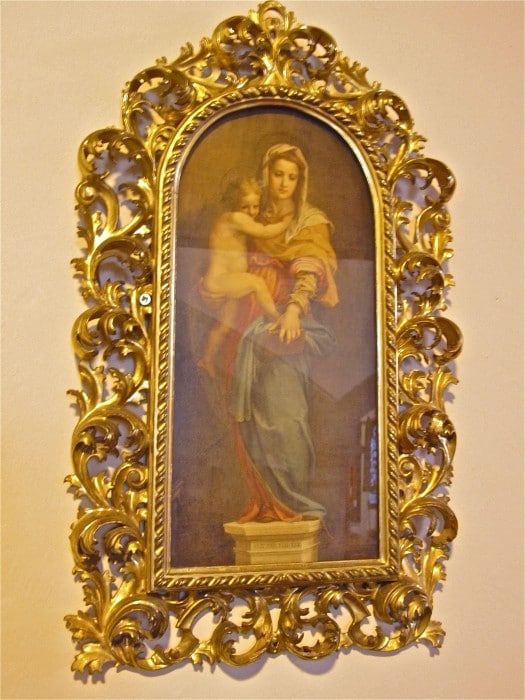
Watercolour copy of Madonna and the Harpies 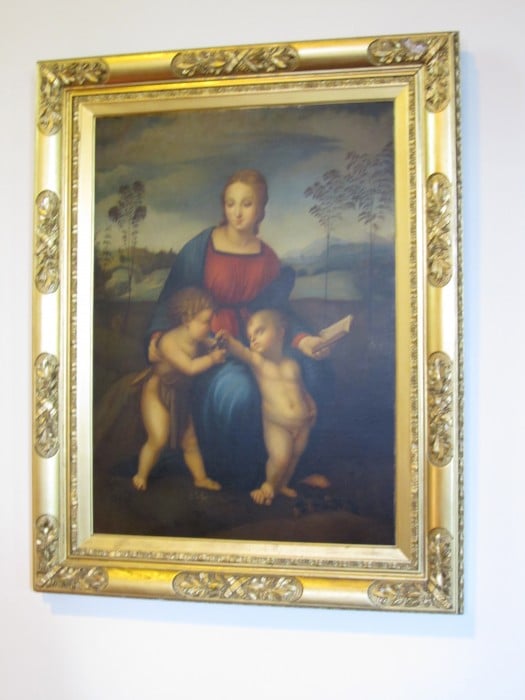
Copy of Madonna of the Goldfinch 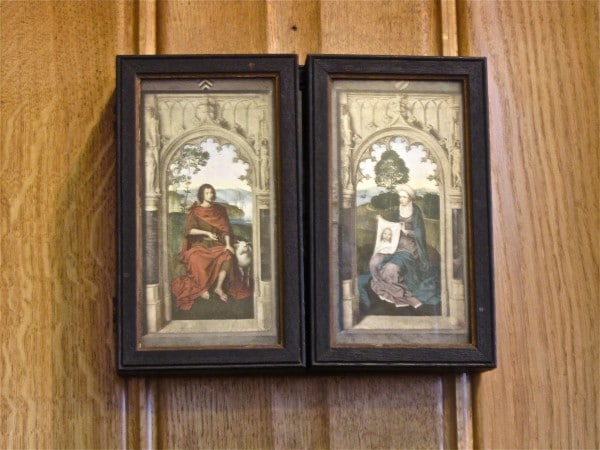
Tryptich closed 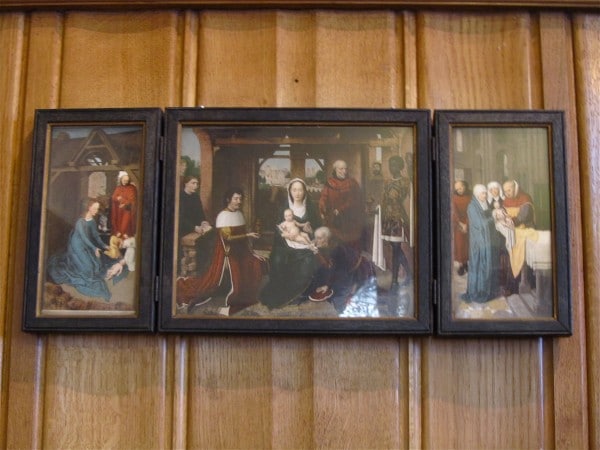
Tryptich open
